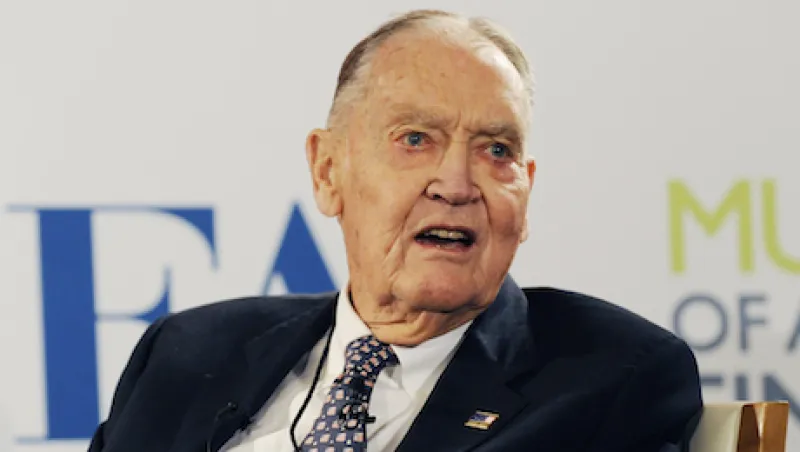A few years ago, during a seminar hosted by the TIFF Education Foundation in Cambridge, Massachusetts, famed hedge fund manager Seth Klarman was asked a question I’ve always wondered about: “Is investing an art or a science or a craft?”
The value investor, whose Boston-based Baupost Group manages about $27 billion, replied: “I would say art first and foremost, craft second, science third.” Klarman, whose oldest fund has delivered an annualized return in the high teens since its 1983 inception, explained that the science of valuing securities “is almost a commodity these days,” while the craft — what he calls “showing up” every day — is especially important for value investing, where one of the keys to success is being disciplined and not overpaying. The art, he went on to describe, is “the ability to distill two or three major themes out of an investment and get right to the heart of the matter.”
For index fund pioneer Jack Bogle, not surprisingly, investing is more science than art. Bogle, who famously founded Vanguard Group after getting ousted as CEO by his partners at Wellington Management Co. in 1974, has long argued that investors are best served by putting their money in low-fee mutual funds that closely match the returns generated by the stock or bond market as a whole. The science for firms like Vanguard is in replicating the performance of an index at the lowest possible cost.
Bogle and Klarman represent two sides of the age-old asset management quandary, which Peter Berezin probes brilliantly in his article “What Am I Good For? Debating the Merits of Active Versus Passive Management,” in the May issue of The Bank Credit Analyst. Berezin, chief strategist of BCA Research (a member of the Euromoney Institutional Investor family), lays out why it’s mathematically impossible for active investors, on average, to beat the market (fees and expenses are a big reason). He also makes a strong case for active management: “The real question is not whether there is a role for active managers — there clearly is since markets could not function without them — but what qualities distinguish superior managers from the rest of the pack.” Answering that question, however, isn’t easy, Berezin adds, because it is difficult to determine whether a manager’s good fortune is the result of exceptional skill or luck.
Adrian Orr is firmly in the skill camp. The former central banker runs the New Zealand Superannuation Fund and, as the Sovereign Wealth Center's Loch Adamson reports in "New Zealand's Orr: One of the World's Most Innovative Investors," has turned the $22 billion sovereign wealth fund into one of the world’s most innovative investors by implementing a total-portfolio approach that integrates active and passive management to create superior risk-adjusted returns.
The results are beyond debate.
Watch a video of the interview with Orr.






